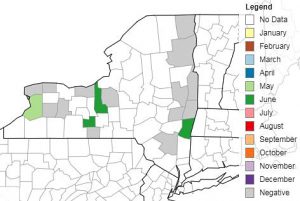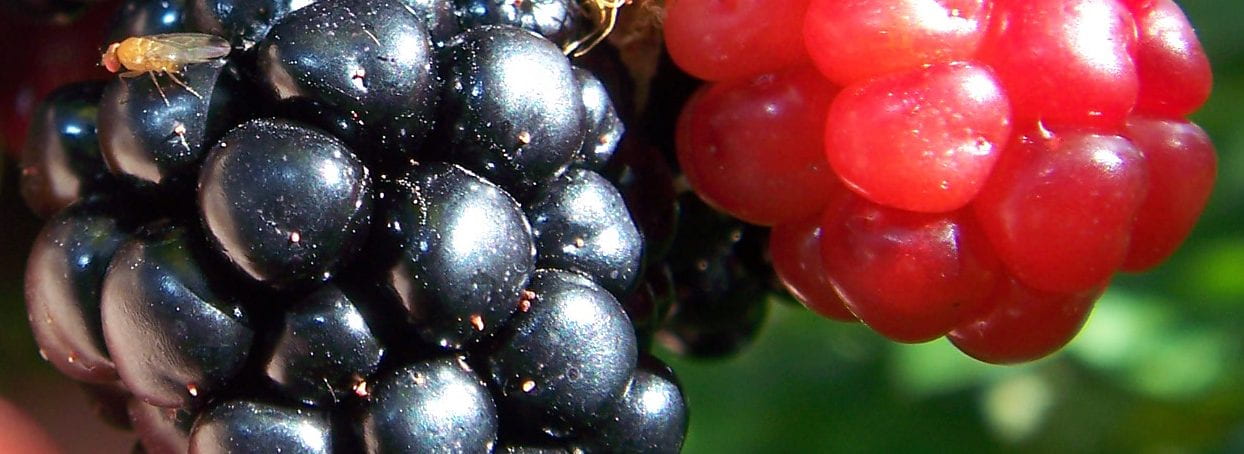One female SWD was caught in a trap set in a sweet cherry orchard in Columbia County during the week ending June 18, 2018. Three other traps at that orchard, two on the orchard edge and another within the orchard, caught zero SWD. These traps are being monitored by technician Natasha Field, working with Laura McDermott and the Eastern NY Commercial Horticulture Program. This cherry block is an early variety and is starting to color.
Two female SWD were caught in traps set in a raspberry planting in Schuyler County during the week ending June 18, 2018. Two other traps set on the edge of the planting and four other traps in an adjacent blueberry planting caught zero SWD. These traps are being monitored by Nicole Mattoon and Ryan Parker, technicians working with Juliet Carroll in the NYS IPM Program. Raspberry fruit are still green at this location.

SWD numbers are still low to non-existent across the Cornell Cooperative Extension SWD trap network trapping locations. Fruit is still, for the most part, immature. However, June strawberry season is underway and a few ripe raspberries were seen in a planting of selections from Courtney Weber's small fruit breeding program, Horticulture, Cornell University.
Once fruit is ripe, it will be important to put a spray program into place. Recent research in Washington State on modeling population growth of SWD suggests that spraying with the most efficacious material early on will knock down the population, slow population growth over time, and make for easier control, possibly with fewer sprays (thus less costly) as the season progresses.
As with any management program, the more cultural tactics that are in place to thwart SWD, the better:
- clean harvesting
- removing overripe and damaged fruit
- mowing and weed control
- pruned and open canopies
- judicious irrigation; no leaking irrigation equipment
- postharvest cooling and refrigeration at around 32° to 33° F
More on SWD management can be found in the Cornell Pest Management Guidelines, which are updated yearly, and on the Cornell Fruit Resources Spotted Wing Management page.


Is Exirel labeled for strawberries in New York.
Yes, it is. Exirel, EPA Reg Number 352-859. Use on strawberry for SWD is on the supplemental label and on the new product label, approved by NYS DEC in Septemeber 2017. This material is classified as a restricted use material in New York State. I will update the berry SWD insecticide quick guide accordingly.